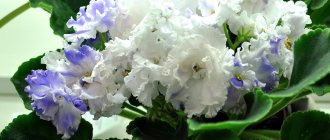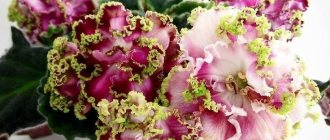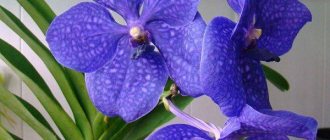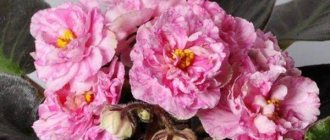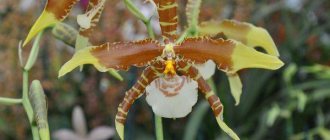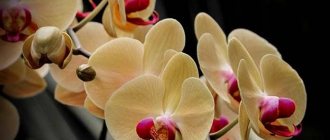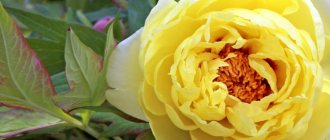Varieties of peonies by color
The color range of peonies is impressive. Through the efforts of breeders, varieties of different tones have been created, with many complex shades. Most of those who are just starting to grow a crop are wondering what colors peonies come in. The color palette starts with a sophisticated white and progresses to dark and black shades. Pink, purple, different shades of yellow and red - rare crops can boast such a variety of colors.
White
Snow-white buds against a background of bright greenery are an impressive and memorable sight. This peony is considered royal; many white varieties confirm this definition:
- Duchess de Nemours. Large flowers up to 20 centimeters in diameter with a lily of the valley scent. It grows up to a meter in height, blooms for about 2 weeks in any weather. The light yellowish tint of the bud in the center turns pearly at the edges.
- Mom's favorite. Peony with dense, dense, double snow-white flowers, petals with a wave along the edge. The bush grows up to 90 centimeters, blooms profusely.
- Moon River. The flowers are white-cream in perfect shape without pistils or stamens. The petals sometimes glow soft pink. A mid-late variety with a stem height of up to 80 centimeters.
- Shirley Temple. White beauty on a dense stem with a spherical head. A very frost-resistant variety (up to -40°) does not need shelter for the winter.
The Festival Maxima is fragrant with the scent of roses. The petals are colored with a red or pink border, which is why the flowers on the bush look different.
Pink
Peonies of various pink shades are among the most popular; many varieties and hybrids have been bred:
- Sarah Bernhardt. An old proven variety with soft pink petals, a flower up to 20 centimeters. The aroma is pronounced, spicy. The bush is durable and does not require garter.
- Nancy Nora. The petals have a delicate and unusual shade of pink and lilac. They do not lose their brightness under the bright sun.
- Monsieur Jules Elie. The spherical flowers are literally filled with bright pink petals. The bush is large, densely strewn with buds.
The Vogue variety blooms with buds with a soft pink tint, which gradually fade into pink-beige. A giant among peonies - when opened, it reaches 25 centimeters.
Red and burgundy
Red peonies impress with their brightness and richness of tone. Many varieties are rare and expensive. Better representatives:
- Henry Boxtos. Pomegranate-colored flowers are distinguished by their large size and splendor. Terry with a pink center, regular shape.
- Team Performance. The diameter of the flower can reach 30 centimeters. When fully expanded, the peony looks like a pompom lying on the smooth lower petals.
- Red. Petals are dark red. Terry, bomb-shaped buds are a true miracle of the garden.
Among burgundy-colored peonies, the most popular varieties are Armani with glossy petals and Peter Brand, which sometimes has 2-3 flowers blooming on the stem.
Tricolor
Breeders have created varieties and hybrids that delight with their multicolored, complex combination of different shades:
- The charm of sunrise. Peony petals are as varied as the color of the sky at sunrise. On the pink base of the lower petals there are narrow cream petals, with crimson streaks appearing in the center.
- Take Sunday apart. A real miracle, like an exquisite dessert, is a combination of different tones of pink and cream.
- Top Brass. A lush flower that combines delicate tones of white, yellow and pink.
The Sherbet (Sorbet) variety has three-layer flowers. The layers are painted white, cream, and soft pink.
Blue and light blue
Some varieties of peonies have the words “blue” or “light blue” in their names. This is rather a dream or a trick of the creators of the hybrid; blue-blue buds have not yet been obtained in reality. Usually the bush blooms with heads of lilac, purple, and pink tones.
Varieties Deep Blue Sea, Blue Doe, Blue Snowflake delight the eye with splendor and beauty, but not with blue shades.
Lilac and purple
The following representatives of lilac and purple peonies enjoy the greatest fame among gardeners:
- Duck Black Ash is a tree-like species with buds of a rich purple-pink hue;
- Bellville is a late-blooming variety with purple and lilac flowers;
- Alexandre Dumas - bred in the 19th century, the color of the petals is lilac-pink, strong aroma;
- Sapphire - lilac petals, corrugated and silky, have purple spots in the center.
See also
Why chrysanthemums sometimes don’t bloom in open ground and how to speed up the process
Read
The varieties Violet Lotus, Lilac Fog, and News of Altai are distinguished by their tenderness and splendor.
Help: It is recommended to frequently moisten the buds of lilac and purple peonies to maintain the brightness of the color.
Yellow
Breeders had to work hard to create yellow peonies; during the blooming process, the shade of the petals often changed to beige or sand. The Lemon Chiffon variety was bred in Holland; bright yellow stamens stand out against a pale lemon background. The color of the petals remains the same throughout the flowering period.
The Golden Willow Peony decorates the garden with unusual yellow-green shades of petals and large spreading bushes. Other famous yellow varieties include Golden Chariot, Sunny Boy, Golden Eagle, Bartzella.
Dark and black
Lovers of dark, almost black flowers should choose the following varieties:
- Black Panther - burgundy-beet heads with a diameter of up to 25 centimeters;
- Black hydrangea - spherical peony heads are painted dark purple, diameter 14 centimeters;
- Sable is a semi-double flower with burgundy petals and a burning golden center;
- Bob is a famous variety with dark purple petals and a bomb-shaped shape.
Gloomy dark beauties are popular among gardeners. Other varieties include Dark Eyes, Black Crown, Sacred Mountain.
Fuchsia and crimson peonies
The color of fuchsia attracts with its brightness, unique chic, and refreshes the greenery of flower beds and summer cottages. The Bouquet Perfect variety looks great, the petals look either crimson or pink-violet.
The lush heads of the Purple Spider variety are cast in purple and fuchsia. The petals are monochromatic, so they look especially bright, the color is saturated. Another miracle of soft magenta tone is Morning Lilac with semi-double, strongly open flowers.
Orange
Orange peonies glow like golden balls in the sun. Among the best varieties:
- Gold scattering - petals of a golden hue with a pink-violet edging;
- Kinkaku Jin Ge – the complex coloring of the petals (orange, pink, flesh) looks amazing;
- Garden Treasure - yellow petals with an orange center, making the bud bright and glowing.
The peachy-orange beauty Copper Kettle has a head up to 20 centimeters, an exquisite appearance and aroma.
Cream and beige
Peonies with delicate, pastel-colored petals:
- Anchatress is a double beauty of a pink form when blooming, lemon-white, then turns into white-cream;
- Marilla Beauty – touching flesh-colored petals in a velvet stuffed flower;
- Doris Cooper - creamy pink heads with evenly folded petals;
- Canary Brilliants – the petals of this peony look like a delicate peach.
Many white peony varieties bloom in shades of cream and beige, then lighten.
Ito hybrids
A very popular variety because it combines the power of trees and the lightness of herbaceous ones.
Border Charm
Yellow double flowers up to 16 cm in diameter, bush up to 70 cm. There are scarlet strokes at the base of the petals. In selections of varieties of yellow peonies, the names Barzella, Sunny Boy, and Gold Mine are often mentioned.
In the photo these are more lush peonies, but they are all herbaceous, Border Charm is more hardy and exotic.
Cora Louise
Very large flowers up to 25 cm, tall bushes up to 90 cm. Peonies are pale lilac with an extremely bright purple-burgundy center. Contrasting, bright variety.
Cannery Diamonds
Flowers of complex but popular colors, coral varieties of peonies are in fashion. This variety has semi-double flowers up to 20 cm in diameter, variable in color, combining yellow, apricot, and pink tones. Bush – 90 cm.
Lollipop
Exotic flowers up to 17 cm, double, bush - 85 cm. Flowers of outstanding color - fuchsia-colored splashes spread in rivulets over a light yellow background.
Hilary
Terry peonies up to 17 cm, even closer to true coral. Color changeable. The warm pink tone can transition into lighter creamy tones and almost cherry. Bush – 90 cm.
Tree peonies die off in the winter, so they winter well in the Russian climate.
Classification of varieties by ripening time
Peony lovers rarely limit themselves to one bush. Selecting crops with different ripening periods helps to make your favorite plant bloom for a long time.
Early
Early cultures are especially loved - after a gloomy winter, you want bright colors and a riot of greenery. Among the early and mid-early species, the following are in particular demand:
- Coral Fairy – bright pink-red;
- Claire de Lune - with two-row petals, white and yellow;
- Pearl scattering - pink petals with mother-of-pearl, pink-yellow staminodes;
- Buckeye Bell - blackish-red petals, bright gold staminodes;
- Lada – white-cream terry variety;
- Sunny Gel - with rare yellow heads.
Representatives of the coral group bloom early - Salmon Chiffon, Coral Supreme, Sable. Flowering of early species begins in late May-early June.
Average
The average flowering period includes peonies that bloom in mid-June. There are many terry varieties in this group, distinguished by complex shapes and colors:
- Princess Margaret - a pure pink, large flower without purple tones;
- Varenka - pink-spherical, very lush, dark pink;
- Cruiser Aurora - scarlet-red hemispherical flower;
- In memory of Academician Tsitsin - white-pink with red strokes in the center, with a long flowering period;
- Top Brass is a creamy white and pink tricolor bud, at the end of flowering a protruding feather appears (high petals).
Lush heads adorn the bushes until the end of June.
Late
The last wave of peonies blooms on the 20th of June - these are late varieties:
- Pobeda – red peony of domestic selection;
- Snow globe is a double rose-shaped bud with a faint aroma;
- Kuril Islands - rainbow petals of white and pink shades;
- Old Faithful is a purple-red wonder with velvety petals;
- Albert Kruss is a salmon pink ball with cream edges.
Late varieties end the peony flowering season in early July.
Kansas
This variety of American selection has won many awards in its homeland. The bushes do not have any special care requirements, tolerate severe frosts, and do not require frequent watering or fertilizing.
Kansas inflorescences of a spectacular dark crimson hue emit a wonderful aroma and do not fall off in the bouquet for a long time. The bushes of this peony do not need support.
| Petal color | Flower diameter (cm) | Bush height (cm) | Flowering time |
| Snow-white | 15-20 | 60-90 | End of May – June |
Herbaceous varieties
In herbaceous species, the ground part dies off in winter, and growth of the bush begins in the spring. Most peonies are herbaceous, among them there are many varieties that are impressive in appearance and aroma:
- Alice Cruz - delicate flowers bloom pink, then fade to white, with cream and pink petals in the center;
- Carol is a scarlet-red flower with a tightly twisted, non-opening center;
- Charismatic – pink-coral flowers burning with fire with rounded petals;
- Garden Treasure - 1996 gold medal winner, yellow lush flower with orange center;
- Armani – ruby-burgundy, lush, luxurious;
- Lady Kate - dark pink flowers, shiny, perfectly shaped.
See also
Description and characteristics of the best varieties of New Belgian aster, planting and care
Read
Herbaceous hybrids are frost-resistant and grow in most regions of Russia.
By size
The size of the bushes is from 25 cm to 250 cm. Varieties of peonies are divided into dwarf, low-growing and medium-growing, and tall shrubs.
Dwarf
Their name is patio peonies. The lowest are up to 25 cm, the standard height is no more than 60 cm. Dwarf fragrant beauties are Moscow, Oslo, Green Lotus, Touch of Love.
Normal
The standard bush size is 0.6-0.8 meters. Hybrid varieties are also included in this classification niche. The medium size is more suitable for garden plantings. Almost all types of hybrid and herbaceous peonies have it.
Gigantic
Giant peonies grow over 1.5 meters in height. These include tree peonies, which increase their growth every year. Of the hybrids bred, these are: Kievan Rus, Alisa Kruss, Anatoly Skakodub.
Tree peonies
In tree-like varieties, the bush grows up to 1.5-1.8 meters, the foliage falls in the fall. The number of buds on the plant reaches 60-70. The best tree peonies:
- Green beans - corrugated petals of a greenish tint are collected into a dense terry bud;
- Giant from Chemosa - light red crown-shaped flowers, tall bush;
- Kinko - golden petals with a brighter red-orange edge;
- Secret Passion - purple-red buds slightly hidden in abundant foliage;
- Red visa pink - soft pink strokes run along the red cherry petal, which is why the flowers look variegated and different from each other.
The lifespan and flowering life of tree species is longer than that of herbaceous species (up to 50 years).
Burgundy varieties
Peonies with burgundy petals are a bright accent to any flower bed. The most famous varieties:
- Akron, reaching a meter in height and having elongated petals of a carmine-red hue.
- Angelo Cobb Freeborn with double inflorescences, having early flowering periods and stem lengths up to 90 cm.
- Chokelit Soulde, related to interspecific hybrids, characterized by dark cherry petals with a light chocolate undertone.
Terry
Lush multi-petal peony flowers retain their shape for a long time and do not discolor under the sun's rays. The most beautiful terry varieties:
- Shirley Temple - pinkish-cream spherical buds;
- Green Jade is a tree-like species with lush greenish flowers;
- Sarah Bernhardt is an old, proven variety with pink lush buds;
- Barbara - a crown-shaped flower with deep pink petals;
- Bowl of Cream - a creamy ball with a honey aroma;
- Red Charm is a striking, cherry-red, bomb-shaped flower.
The terry peonies Marshall MacMahon, Ren Hortens, and Edulis Superba are distinguished by their beauty and brightly colored petals.
Causes of reddening of leaves in peonies and how to combat them
As we wrote above, there are six main reasons for this, let’s look at them in more detail.
Lack of sunlight
For young stems and leaves of peonies, as soon as they awaken and begin to emerge from the ground, a brown, red-brownish color is a normal feature. This is a feature of the plant, explained in simple words.
The plant does not have enough lighting. If it has just crawled out of a dark place, it is simply not used to the sun's rays. As soon as it acclimatizes, the leaves will immediately acquire their usual green color.
If redness occurs in an adult shrub, then the cause of the lack of lighting should be looked for in the area.
Installing a fence, fence, canopy can lead to such consequences. Just move it aside, remove the decorative elements and everything will turn green again.
As a last resort, move the flowerbed to the other side so that light falls on it.
Sudden change in illumination
Peonies are very sensitive.
To adjust the color, a change in external climatic conditions is sufficient.
A sudden change in weather from long gray cloudy to bright sun will make them blush. Once the brightness becomes familiar, it will become noticeable by the color of the pigment.
A few days are enough for manifestation.
Gray rot
If there is a sharp jump in pigmentation from green to red, it is worth conducting an external inspection of the stems of the bush. A light gray coating can be detected on the base of the shoots.
This indicates the presence of gray rot. Mold infection with pronounced, rapid development occurs at the end of the spring months.
Video: Diseases of peonies. How to recognize and how to treat.
Video: Diseases of peonies. Why do peonies' leaves wither? Website "Garden World"
Rot easily spreads to the immediate environment, complemented by brown spots and a faded appearance.
Reasons for appearance:
- acquiring spores from neighboring plants or trees;
- increased soil moisture;
- increased concentration of nitrogen fertilizers.
The struggle branches out in several directions. Ventilating the flower garden area, observing the soil and its properties will help restore the bush.
Infected parts of greenery are cut off and subsequently destroyed. Treatment with anti-mold agents should be performed for prevention purposes and to destroy spores.
If the situation is aggravated by prolonged rain or other natural precipitation, the bush should be protected from them.
Long-flowering
ITO hybrids have a long flowering period (2-3 weeks). This is achieved due to the gradual opening of the apical buds and the late growth of lateral shoots, on which flowers also develop. Known ITO hybrids:
- Bartzella - yellow flowers with raspberry-orange spots in the center;
- Yellow crown - double and semi-double buds of yellow-lemon color with the thinnest delicate petals;
- Canary diamonds – the ruffled petals have a creamy yellow color, with a cherry-colored spot in the center;
- Cora Louise - pale lilac-pink petals, brighter lavender center.
Coral Sunset, Red Grace, and Garden Treasure also bloom for a long time and stand as cut flowers.
Reference: ITO peonies bloom for up to 2-3 weeks, medium-double peonies - 12-14 days, shorter life expectancy for non-double species - 6-10 days.
Planting and caring for burgundy peonies
Burgundy peonies are unpretentious flowers to grow. It is enough to choose a good place for them and follow the basic rules of care:
- It is recommended to plant peonies in well-lit areas - the flowers love sunlight. At the same time, there should be tall buildings nearby that will provide the peonies with cover from drafts and strong winds.
- The soil for burgundy peonies should be dry. Before planting peonies, you need to organize drainage on the site and enrich the soil with wood ash, humus and mineral fertilizers.
- Plants are planted in the ground mainly in September. Spring planting is acceptable, but not recommended. The hole for the perennial should be deep, about 80 cm, since its root system grows quickly.
Bushes should be planted close to buildings, but in sunny places
Caring for burgundy peonies is not particularly difficult. Flowerbeds need to be watered weekly, if there is no precipitation; after watering, the soil at the roots is loosened and weeds are removed. The flowers are fed three times a season - with nitrogenous fertilizers in early spring, complex minerals during the flowering period, potassium and phosphorus 2 weeks after flowering. When the burgundy buds dry out, you will need to trim the flower stalks.
For the winter, it is customary to trim the bushes almost to the ground.
Advice! In order for the plant to survive the winter well, in the fall, with the onset of frost, you need to cut the stems almost flush with the ground and mulch the flowerbed with peat to a depth of 7-10 cm.
Fragrant varieties
All varieties of peonies have an aroma; breeders of the 19th century in France focused on the smell. In the 20th and 21st centuries, more attention was paid to color, pomp and head shape. Exquisite aromas have:
- Pink Hawaii Coral smells like fresh hay;
- Anchantress, Myrtle Gentry, Madame de Verneville, Rose Marie - rose scent;
- Walter Maines - smells fresh;
- John Howard Wiegel - clove scent;
- Alyosha Popovich, Excelsa – lily of the valley;
- Star Light, Weatherball-90 – honey;
- Odile, Linnaeus – coffee with milk;
- Arkady Gaidar, Waltz – linden blossom;
- High Fashion, Jay See - apple;
- Sinbad - lilac scent.
The following varieties have complex floral aromas: The Martian, Duchess de Nemours, Treasure of the Garden, and Pink Champion. Note that some species do not smell, and some have an unpleasant, pungent odor (rotten fish).
Interesting: experts identify up to 16 types of aromas from peonies - roses, lilacs, coffee with milk, freshly cut hay, jasmine, mint, linden.
The best varieties of world selection
To rank the best varieties, the following criteria were provided: appearance, aroma, maintenance conditions, timing and duration of flowering.
The most popular herbaceous variety is the marshmallow-pink Sarah Bernhardt. Shirley Temple has the most beautiful buds in subtle pink tones. The most stable beauty is the white and yellow Duchess de Nemours.
Kiao Sisters
Of the tree varieties, the rating of the most beautiful was headed by Coral Altar. It is also resistant to diseases and pests. An unusual combination is embodied in the buds of Sister Kiao. Red and pink or purple and pink petals color the flower.
Perennial beauties are popular because of their ease of care and chic appearance. Even though they bloom for only a few weeks per season, they are a favorite among gardeners. The variety of varieties allows everyone to find their own variety.
Anemoneaceae
The group of anemone-like peonies is distinguished by its splendor and special charm. The petals of these flowers are very open at the bottom and form a flat base. The upper petals are narrow, lancet, and stand almost vertically. They are painted in a basic tone or have a lighter, contrasting color. A rare and exquisite representative of the group is the Rhapsody variety - with pink outer petals and pale cream-colored inner mini-petals. Snow Mountain has a white base with a mass of creamy yellow curly petals in the center.
Yellow flowers
Peonies with a yellow tint to their petals were bred by breeders not so long ago, but have already gained popularity among gardeners and landscape designers.
The most prominent representatives of the group are:
- Golden Wheel, bred by Chinese breeders. The buds have a regular crown shape and are 15 cm in diameter. The petals are colored in an unusual lime shade. Flowering period is late.
- Lemon Griffon, characterized by a compact bush and spherical double buds up to 22 cm in diameter. The shade of the petals is pale yellow.
- High Noon with sunny yellow buds that have a rare rose-like shape. Flowering is abundant, long lasting, with proper care the last buds open in August.
Cultivation
The key requirement when growing peonies is proper site selection. Since all such crops are perennial, the location must be chosen carefully so that the plant does not have to be replanted quickly. By themselves, burgundy peonies live quite a long time without transplantation, and the main reason for this is precisely agricultural errors. For plants, the level of illumination is critical.
But you can’t just choose the sunniest piece of land in your garden or garden.
The proximity of trees or tall shrubs is very important. They will play the role of a natural barrier from the piercing wind and draft.
However, even if a seemingly suitable site is found, this is not a reason to calm down. You should check whether the soil is dry enough.
Peonies belong to a plant family that suffers greatly from excessive humidity. There is a high risk of root rotting. Planting is recommended in autumn. In the spring, peonies should be planted (and even replanted) only when absolutely necessary. Having chosen a suitable zone, holes of great depth are formed.
Putting the shovel aside, pour in the drainage. Both broken brick and crushed stone of various fractions are used as it. Ordinary fertile soil should be poured over the drainage layer. To bring its quality to the proper level, this layer is mixed:
with pure wood ash;
Having planted a peony seedling, immediately straighten its roots. They should be immediately covered with soil and watered. Important: as soon as the ground laid initially settles, a new portion is added. This is required so that the stem stands stable. In spring, decent watering is extremely important for peonies. The plantings are irrigated once a week, until the beginning of August.
After the soil settles, it is useful to fluff it up a little to facilitate the flow of oxygen to the roots. There is no need for special fertilizing for newly planted bushes. The exception is the situation when the necessary substances were not placed in the ground in advance. Fertilizers during planting are usually calculated so that they are guaranteed to last for at least 12 months.
Adult peonies require nitrogen and potassium supplementation. Ammonium nitrate is placed on top of the ground. Experimenting with other fertilizers is not recommended. It is better to find out what exactly is suitable for a particular variety.
In some cases, cutting off the side buds is practiced. They resort to it if they want to enlarge the main flower to the limit. Important: tall and thin stems need auxiliary support. Very often you can see that they are unable to bear the load created by the buds on their own. One more nuance: it is worth combining peonies of different varieties. If you choose their combination correctly, you can achieve coverage of almost the entire summer period.
Sarah Bernhardt
Peonies of this variety, named after the famous French actress, are rightfully considered one of the most spectacular and fragrant. At the end of spring - beginning of summer, the bush is covered with large terry balls of a soft pink hue with small splashes of crimson color.
Peony Sarah Bernhardt is winter-hardy, undemanding to soil type, needs moderate moisture and good drainage.
| Petal color | Flower diameter (cm) | Bush height (cm) | Flowering time |
| Dark Pink with Raspberry Stripes | 15-20 | 60-90 | End of May – June |
Red Charm
Red Charm (or “red charm”) is a catchy, beautiful, attention-grabbing variety of terry peonies. The diameter of the red bomb-shaped inflorescences exceeds 20 cm, so sometimes the bush needs a garter.
A pleasant feature of this plant is its shiny dark green leaves, which remain decorative until frost.
The rich aroma of Red Charm peonies attracts a large number of butterflies and bees.
| Petal color | Flower diameter (cm) | Bush height (cm) | Flowering time |
| Dark red | 20 | 70-90 | End of May – June |
Festiva Maxima
The herbaceous peony of the Festiva Maxima variety has been decorating European gardens since the century before last. The color of the petals is interesting: they are snow-white, in places with an elegant dark crimson edging.
Peonies from the Festival Maxima have a strong, pleasant aroma and stand well in bouquets. The bushes retain their beautiful appearance after flowering ends.
| Petal color | Flower diameter (cm) | Bush height (cm) | Flowering time |
| White with crimson trim | 15 | 80-90 | End of May – June |


